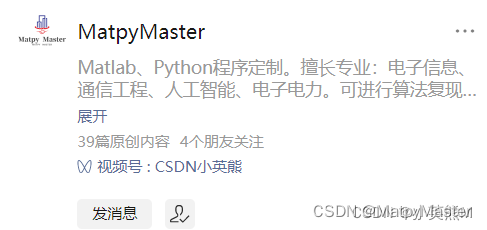①yolov7的默认锚框
yolov7的默认锚框都在 .\cfg\training 的yaml文件里面,比如yolov7-tiny.yaml
# anchors
anchors:
- [10,13, 16,30, 33,23] # P3/8
- [30,61, 62,45, 59,119] # P4/16
- [116,90, 156,198, 373,326] # P5/32其中, 每一行代表应用不同的特征图;一行最大,二行中等,三行最小。
②自定义锚框
yolov5和yolov7带有自适应锚框
具体代码在 ..\utils\autoanchor.py 文件里面,
代码如下:
1.训练时自动计算锚框:
def check_anchors(dataset, model, thr=4.0, imgsz=640):
# Check anchor fit to data, recompute if necessary
prefix = colorstr('autoanchor: ')
print(f'\n{prefix}Analyzing anchors... ', end='')
m = model.module.model[-1] if hasattr(model, 'module') else model.model[-1] # Detect()
shapes = imgsz * dataset.shapes / dataset.shapes.max(1, keepdims=True)
scale = np.random.uniform(0.9, 1.1, size=(shapes.shape[0], 1)) # augment scale
wh = torch.tensor(np.concatenate([l[:, 3:5] * s for s, l in zip(shapes * scale, dataset.labels)])).float() # wh
def metric(k): # compute metric
r = wh[:, None] / k[None]
x = torch.min(r, 1. / r).min(2)[0] # ratio metric
best = x.max(1)[0] # best_x
aat = (x > 1. / thr).float().sum(1).mean() # anchors above threshold
bpr = (best > 1. / thr).float().mean() # best possible recall
return bpr, aat
anchors = m.anchor_grid.clone().cpu().view(-1, 2) # current anchors
bpr, aat = metric(anchors)
print(f'anchors/target = {aat:.2f}, Best Possible Recall (BPR) = {bpr:.4f}', end='')
if bpr < 0.98: # threshold to recompute
print('. Attempting to improve anchors, please wait...')
na = m.anchor_grid.numel() // 2 # number of anchors
try:
anchors = kmean_anchors(dataset, n=na, img_size=imgsz, thr=thr, gen=1000, verbose=False)
except Exception as e:
print(f'{prefix}ERROR: {e}')
new_bpr = metric(anchors)[0]
if new_bpr > bpr: # replace anchors
anchors = torch.tensor(anchors, device=m.anchors.device).type_as(m.anchors)
m.anchor_grid[:] = anchors.clone().view_as(m.anchor_grid) # for inference
check_anchor_order(m)
m.anchors[:] = anchors.clone().view_as(m.anchors) / m.stride.to(m.anchors.device).view(-1, 1, 1) # loss
print(f'{prefix}New anchors saved to model. Update model *.yaml to use these anchors in the future.')
else:
print(f'{prefix}Original anchors better than new anchors. Proceeding with original anchors.')
print('') # newline其中的主要参数是 bpr和aat
其中bpr 参数就是判断是否需要重新计算锚定框的依据(是否小于 0.98)。
2.重新计算符合数据集的锚框代码如下:
def kmean_anchors(path='./data/coco.yaml', n=9, img_size=640, thr=4.0, gen=1000, verbose=True):
""" Creates kmeans-evolved anchors from training dataset
Arguments:
path: path to dataset *.yaml, or a loaded dataset
n: number of anchors
img_size: image size used for training
thr: anchor-label wh ratio threshold hyperparameter hyp['anchor_t'] used for training, default=4.0
gen: generations to evolve anchors using genetic algorithm
verbose: print all results
Return:
k: kmeans evolved anchors
Usage:
from utils.autoanchor import *; _ = kmean_anchors()
"""
thr = 1. / thr
prefix = colorstr('autoanchor: ')
def metric(k, wh): # compute metrics
r = wh[:, None] / k[None]
x = torch.min(r, 1. / r).min(2)[0] # ratio metric
# x = wh_iou(wh, torch.tensor(k)) # iou metric
return x, x.max(1)[0] # x, best_x
def anchor_fitness(k): # mutation fitness
_, best = metric(torch.tensor(k, dtype=torch.float32), wh)
return (best * (best > thr).float()).mean() # fitness
def print_results(k):
k = k[np.argsort(k.prod(1))] # sort small to large
x, best = metric(k, wh0)
bpr, aat = (best > thr).float().mean(), (x > thr).float().mean() * n # best possible recall, anch > thr
print(f'{prefix}thr={thr:.2f}: {bpr:.4f} best possible recall, {aat:.2f} anchors past thr')
print(f'{prefix}n={n}, img_size={img_size}, metric_all={x.mean():.3f}/{best.mean():.3f}-mean/best, '
f'past_thr={x[x > thr].mean():.3f}-mean: ', end='')
for i, x in enumerate(k):
print('%i,%i' % (round(x[0]), round(x[1])), end=', ' if i < len(k) - 1 else '\n') # use in *.cfg
return k
if isinstance(path, str): # *.yaml file
with open(path) as f:
data_dict = yaml.load(f, Loader=yaml.SafeLoader) # model dict
from utils.datasets import LoadImagesAndLabels
dataset = LoadImagesAndLabels(data_dict['train'], augment=True, rect=True)
else:
dataset = path # dataset
# Get label wh
shapes = img_size * dataset.shapes / dataset.shapes.max(1, keepdims=True)
wh0 = np.concatenate([l[:, 3:5] * s for s, l in zip(shapes, dataset.labels)]) # wh
# Filter
i = (wh0 < 3.0).any(1).sum()
if i:
print(f'{prefix}WARNING: Extremely small objects found. {i} of {len(wh0)} labels are < 3 pixels in size.')
wh = wh0[(wh0 >= 2.0).any(1)] # filter > 2 pixels
# wh = wh * (np.random.rand(wh.shape[0], 1) * 0.9 + 0.1) # multiply by random scale 0-1
# Kmeans calculation
print(f'{prefix}Running kmeans for {n} anchors on {len(wh)} points...')
s = wh.std(0) # sigmas for whitening
k, dist = kmeans(wh / s, n, iter=30) # points, mean distance
assert len(k) == n, print(f'{prefix}ERROR: scipy.cluster.vq.kmeans requested {n} points but returned only {len(k)}')
k *= s
wh = torch.tensor(wh, dtype=torch.float32) # filtered
wh0 = torch.tensor(wh0, dtype=torch.float32) # unfiltered
k = print_results(k)
# Plot
# k, d = [None] * 20, [None] * 20
# for i in tqdm(range(1, 21)):
# k[i-1], d[i-1] = kmeans(wh / s, i) # points, mean distance
# fig, ax = plt.subplots(1, 2, figsize=(14, 7), tight_layout=True)
# ax = ax.ravel()
# ax[0].plot(np.arange(1, 21), np.array(d) ** 2, marker='.')
# fig, ax = plt.subplots(1, 2, figsize=(14, 7)) # plot wh
# ax[0].hist(wh[wh[:, 0]<100, 0],400)
# ax[1].hist(wh[wh[:, 1]<100, 1],400)
# fig.savefig('wh.png', dpi=200)
# Evolve
npr = np.random
f, sh, mp, s = anchor_fitness(k), k.shape, 0.9, 0.1 # fitness, generations, mutation prob, sigma
pbar = tqdm(range(gen), desc=f'{prefix}Evolving anchors with Genetic Algorithm:') # progress bar
for _ in pbar:
v = np.ones(sh)
while (v == 1).all(): # mutate until a change occurs (prevent duplicates)
v = ((npr.random(sh) < mp) * npr.random() * npr.randn(*sh) * s + 1).clip(0.3, 3.0)
kg = (k.copy() * v).clip(min=2.0)
fg = anchor_fitness(kg)
if fg > f:
f, k = fg, kg.copy()
pbar.desc = f'{prefix}Evolving anchors with Genetic Algorithm: fitness = {f:.4f}'
if verbose:
print_results(k)
return print_results(k)对 kmean_anchors()函数中的参数做一下简单解释(代码中已经有了英文注释):
🔆path:包含数据集文件路径等相关信息的 yaml 文件(比如 coco128.yaml), 或者 数据集张量(yolov5 自动计算锚定框时就是用的这种方式,先把数据集标签信息读取再处理)
🔆n:锚定框的数量,即有几组;默认值是9
🔆img_size:图像尺寸。计算数据集样本标签框的宽高比时,是需要缩放到 img_size 大小后再计算的;默认值是640
🔆thr:数据集中标注框宽高比最大阈值,默认是使用 超参文件 hyp.scratch.yaml 中的 “anchor_t” 参数值;默认值是4.0;自动计算时,会自动根据你所使用的数据集,来计算合适的阈值。
🔆gen:kmean聚类算法迭代次数,默认值是1000
🔆verbose:是否打印输出所有计算结果,默认值是true。
不自动计算锚框可以在训练时设置 default=False
parser.add_argument('--noautoanchor', action='store_true', help='disable autoan③如果bpr小于0.98,没有自动计算锚框,可以手动计算锚框
新建一个py文件,手动计算锚框:
# 从utils.autoanchor 导入kmean_anchors函数
import utils.autoanchor as autoAnchor
'''
path: 储存yaml文件路径,yaml文件中应包含数据集文件路径
n : 生成锚框的数量
img_size : 图片分辨率尺寸,需要将图片缩放到img_size大小尺寸后再进行锚框计算
thr : 数据集中标注框宽高比最大阈值,默认是使用 超参文件 hyp.scratch.yaml 中的 “anchor_t” 参数值;默认值是 4.0;自动计算时,会自动根据你所使用的数据集,来计算合适的阈值。
gen : kmean 聚类算法迭代次数,默认值是 1000
verbose : 打印所有结果
'''
new_anchors = autoAnchor.kmean_anchors(path=r'D:\yolov7-main\data\K-means.yaml', n=12, img_size=640, thr=3, gen=1000, verbose=False)
print(new_anchors) 
最后:
如果你想要进一步了解更多的相关知识,可以关注下面公众号联系~会不定期发布相关设计内容包括但不限于如下内容:信号处理、通信仿真、算法设计、matlab appdesigner,gui设计、simulink仿真......希望能帮到你!
























 6809
6809











 被折叠的 条评论
为什么被折叠?
被折叠的 条评论
为什么被折叠?










